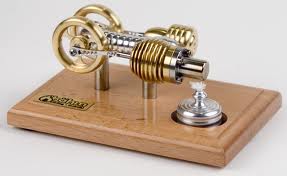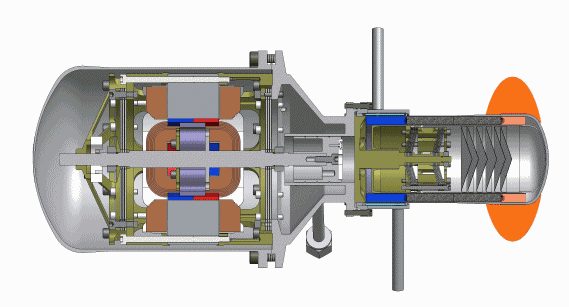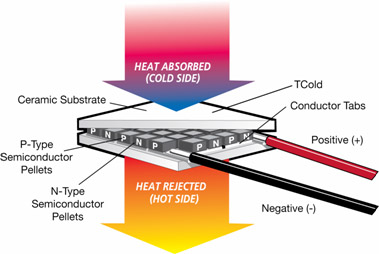The Stirling Engine is a heat engine that was created by Robert Stirling in 1816. The way it works revolves around the compression and expansion of air or a gas. They call the air or gas portion of the machine the “working fluid”, because it is what allows the machine to function and do work. Now there are two different types of Stirling heat engines. There is the Alpha and the Beta versions. The Alpha edition separates the working fluid into two different sections. In one section the working fluid is heated at a high temperature, while in the other it is cooled. This process of temperature change onto the working fluid causes expansion and compression of the sections, in turn moving the regenerator in a cyclical fashion. The Beta edition differs from the Alpha because it only has one section where the working fluid is held. One side of the section is heated, while the other side is cooled. Inside of the Beta machine there is a cylinder shaped tube the loosely fits in the section with the working fluid. As the working fluid adjusts in temperature it moves the tube, which runs the regenerator. AS technology advanced the Stirling engine lost popularity to the electric engine. The main issue with the Stirling model is that it has an external heat source. This makes it so that the engine takes time to warm up and it can’t change the power output level quickly. The machine doesn’t get as much use as it could because there are better alternatives. With that being said there are still modern day uses for the stirling engine. Some of these uses include powering a cordless hair dryer, powering exploration submarines, powering the militaries quietest subs, powering residential areas in Las Vegas and parts of the Netherlands, and even powering research stations in Antarctica.
A Peltier device uses thermoelectric cooling technology and can be used in three different ways. Theres the Peltier heat pump, Peltier solid state refrigerator, and the Peltier thermoelectric cooler. All types use the concept of the Peltier effect. The Peltier effect is made when there are two different conductors that heat and cool. The difference between the models is what the machine does with this effect. Once the current goes into the junction between the two conductors the machine can either eliminate, increase, or lower the heat level. Modern day uses of these machines include air conditioning units for residential and larger scale buildings or to generate electricity.
Sources:
– http://auto.howstuffworks.com/stirling-engine.htm
– http://www.discoverthis.com/article-stirling-engine-top10.html
– http://www.heatsink-guide.com/peltier.htm


